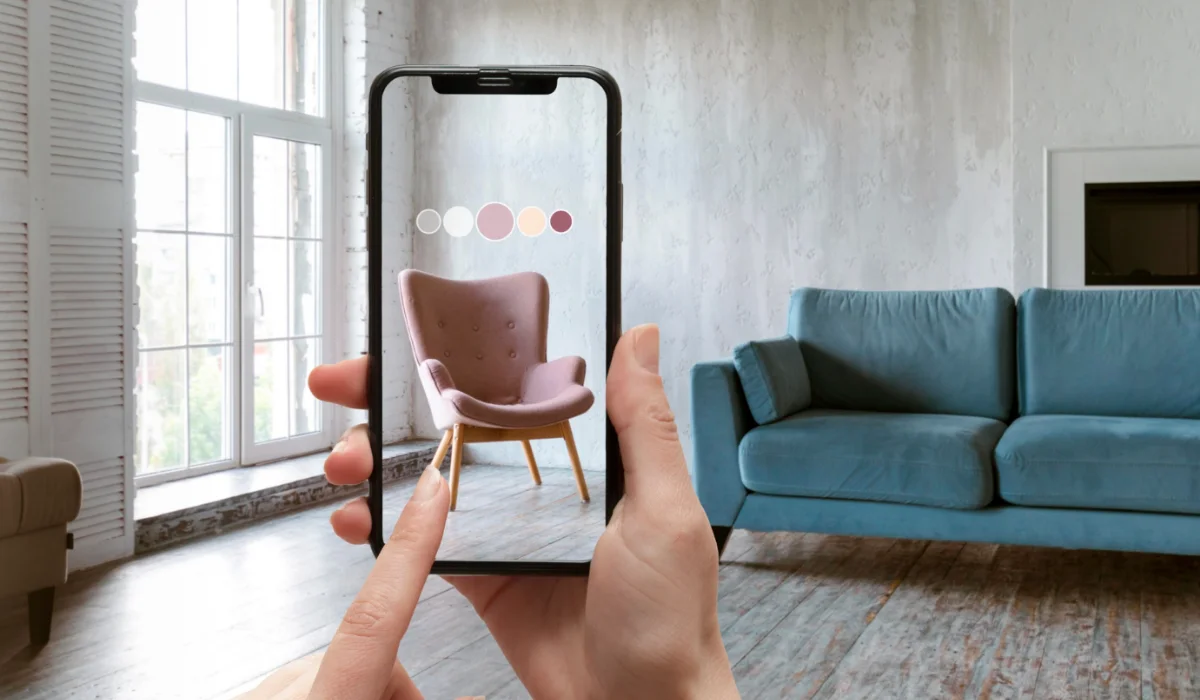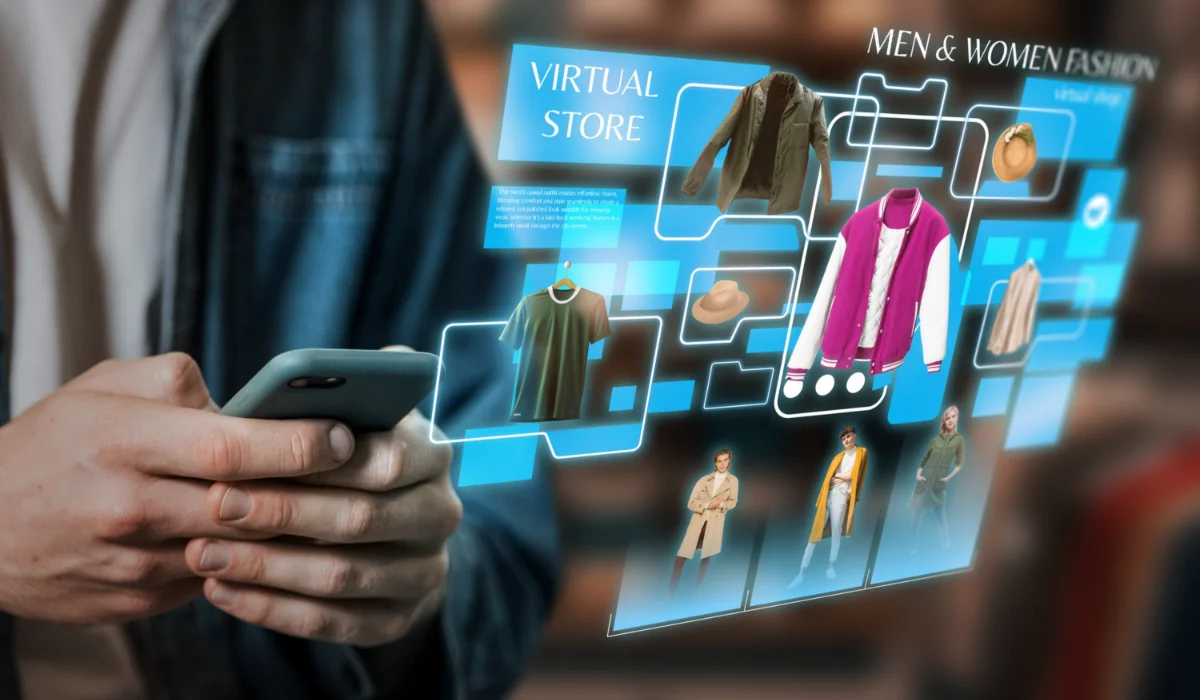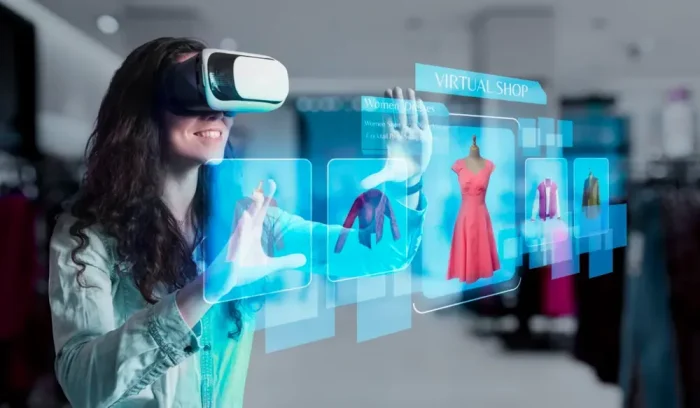Big brands like Nike, IKEA, and Adidas are creating a futuristic shopping experience for their customers. By using augmented reality for sales, these brands are not just touching the borders of virtual reality but creating it. However, using AR in retail is not easy. It requires a proper understanding of the technology.
How AR in Retail is Changing Customer Experience and Boosting Sales
So, let us learn what augmented reality is, how it boosts sales, and a few popular areas where brands can utilize it.
What is Augmented Reality?
AR is a new-age technology that brings images, videos, and 3D models to life. The technology helps in creating our perception of reality.
It can interact with the physical world, capture data, and even bring digital products to life. A great example is a smartphone showing a virtual view of a street with real-time traffic information and directions.
Such capabilities of AR help businesses create interactive digital experiences for their customers.
Also Read: How AI Technology is Reshaping the Customer Experience
How is AR Impacting Sales in the Retail Industry?

Today’s generation believes in the “try before buy” concept. They love to shop from brands that offer convenience and personalization more than the price and quality of products.
Furthermore, they want to shop quickly and confidently. Digital stores with images or visual-based catalogs might have cut their shopping time. But they don’t fit into these growing expectations of the customers.
AR for retail does. It blends the virtual world with the real world, bringing products to life. This immersive ar shopping experience lets users try the products simply from their smartphones or tablets and even customize them.
For businesses, AR brings more sales and business. Here’s a breakdown of how AR specifically contributes to increased sales:
1. Reduced Purchase Anxiety
Nobody wants to make a wrong decision especially when money is involved. AR reduces this fear and helps customers to make confident buying decisions. It allows them to virtually try on clothes, customize interiors of their homes, or visualize an appliance in their living space.
2. Increased Engagement and Product Exploration
Static product images and catalog reduces the time a customer takes to explore the store. They get bored and might not consider other products. By using AR in retail, brands can engage customers for longer with interactive 3D models, informative overlays, and virtual try-ons. They may explore products they would not otherwise and may even boost an urge to purchase them.
3. Increased Conversion Rates
Online shopping brings some sort of uncertainty to the customers, leading to increased cancellations and returns. Augmented reality sales reduces this uncertainty as customers can confidently buy products. This means less product return and more conversions.
4. Personalized Product Recommendations
AR stores leveraging artificial intelligence (AI) boost sales with personalization. Customers get suggestions as per their likings, budget, and what they bought in the past.
It can also recommend complementary items or highlight products that fit their style preferences. This level of personalized recommendations piques their interest and make them want to shop more.
5. Connecting with the Brand
Every brand has a story to tell. There is a purpose behind what they are doing and why they are doing it. For brands focusing on sustainable products, AR is a way to share their story with creativity.
They can showcase how they source and choose sustainable materials for producing their products. Or how every purchase makes an impact on the society and environment. This will help brands create an emotional connection with the customers and encourage repeat purchases.
Also Read: Boosting Customer Experience in Digital Age with AI-Powered Customer Sentiment Analysis
Popular Brands Who Have Used Augmented Reality
- Nike: Nike is using this use case of AR in their retail business. Their mobile app works on augmented reality technology to help customers choose the correct size of their shoes.
- H&M: The fashion brand went beyond to impress their customers. They launched a virtual competition in 2022 where participants got a chance to show their creativity and name the featured looks. As a price, they can try on those virtual outfits and share them on social media.
- Pepsi: In 2019, Pepsi used AR filters to make summertime a fun time for its customers. Every Pepsi bottle has a QR code that unlocks fun filters. Consumers can scan the code through smartphones and share their fun experiences on social media. This grabbed the attention of the youth and made their summer campaign a big hit.
Some More Trending Use Cases of AR in Retail Industry

1. Product Education
Today’s customers don’t do mindless shopping. They want to know what ingredients are used to manufacture the product, how does it benefit them, and risks of using it. Printed information does not give enough information to the customers.
Businesses can use AR for retail to educate customers in a simple and fun manner. Through AR-powered apps, they can scan QR or take pictures to learn about the product. For furniture or electronics brands, this use of AR in retail is very helpful as customers need help with the installation.
It also saves brands’ time on making product guides or user manuals, cutting their cost.
2. Smart Malls
Even though digital online stores are gaining popularity, people still love to shop in malls and physical stores. However, they face a lot of discomforts, especially when exploring the big malls. AR can make malls smarter by helping customers explore every corner of the malls without getting exhausted. How?
Customers can locate the parking space for their vehicles simply through AR-powered mobile apps. Or they can check current offers and discounts by each store in the mall without even physically visiting them. AR truly helps in creating the mall of the future.
3. Product Customization
Customization is the key to attract customers. Let them choose the color, design, and patterns of the product they wish to buy. By using AR, businesses can offer this level of customization increasing the chances of purchase.
4. Smart Advertising
Static billboards and pop-up ads on the screen will soon become a thing of the past with augmented reality. Brands like Netflix, Pepsi, and Sephora are using this technology to grab their customers’ attention.
5. Store Navigation
Brick-and-mortar supermarkets and departmental stores are hard to navigate especially when customers are in a hurry. AR apps can make navigation easier and faster by guiding where a particular product of their shopping list is on the store’s shelves.
Conclusion
Augmented reality is finding its applications in almost every sector. However, the retail industry finds it most useful with smartphone users growing every year. Luxury brands are making the most of this technology.
They are coming up with unique ideas and campaigns to engage their customers with AR.
Now it’s easier for small and medium brands to match them and drive sales through the above use cases of AR in retail.



